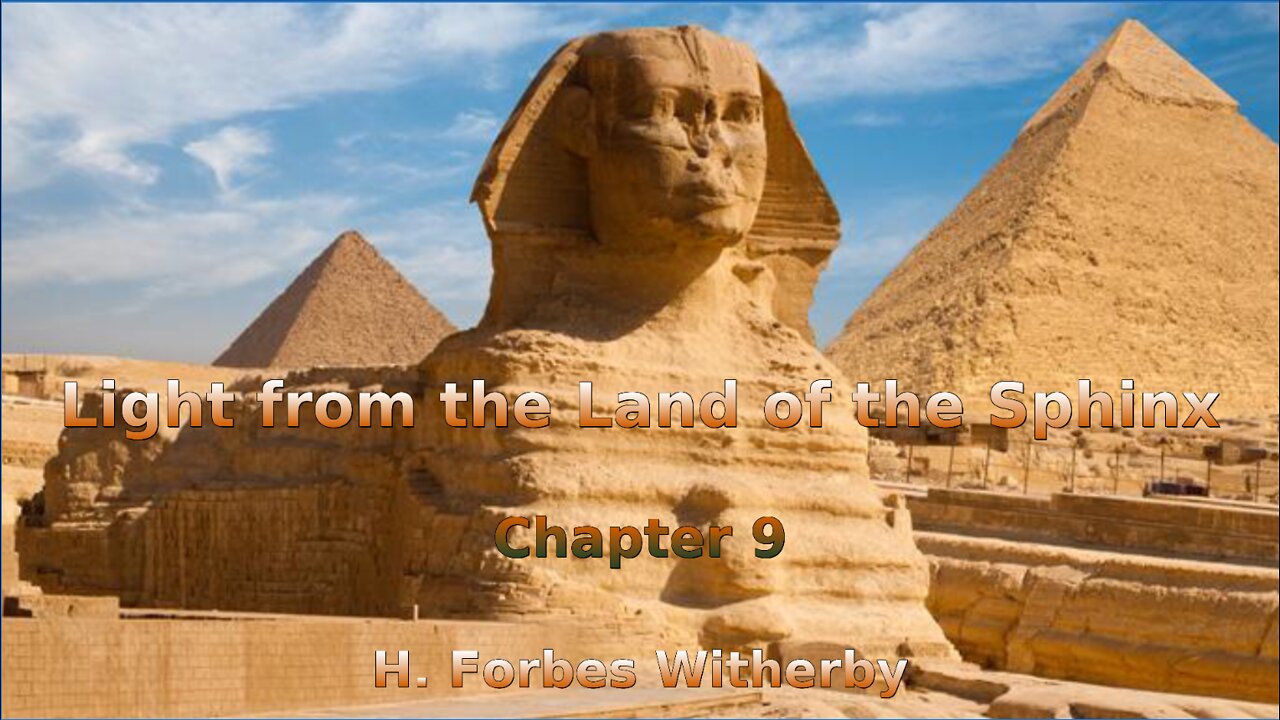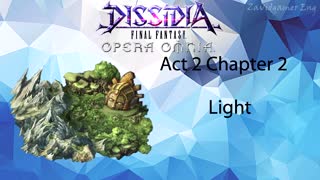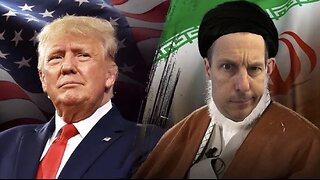Premium Only Content

Light From the Land of the Spinx by H. Forbes Witherby, Chapter 9
Light from the Land of the Sphinx
H. Forbes WitherbyPublished 1896 by Elliot Stock.
If you don’t want to read this long description, I have it in the Preface to this writing in the first recording.
This volume was originally intended to offer the Bible student, who may not have the opportunity of referring to expensive works on modern discoveries in Egypt, references from such works, together with illustrations from the monuments, which would assist in following the writings of Moses; but the materials accumulated with the work, and it was found to be impossible not to enlarge the scope of the book. The reader who loves the writings of Moses will find in the notes contained in this volume important and reliable information, which has been obtained from works of the greatest value; and in the illustrations from the monuments, he will have before him authorities which cannot be disputed. The index should be consulted before the book is read, for it outlines a variety of subjects that must ever fire the mind of the Bible student with enthusiasm and fill it with suggestions. It directs attention to the works of learned authorities, upon whose profound research the arrangement of facts found in this volume is built up.
Taking the Bible narrative of Israel’s exodus from Egypt to their establishment before Jehovah at Horeb, as it stands — which is the only honest way for the first reading of any book — a plain though marvelous tale unfolds itself. By the aid of such side-lights as the ancient monuments and writings of Egypt afford, much of that which appears to be mysterious shapes itself into the everyday life of the past, and the movements of the Divine Hand in relation to that life are made clearly visible. The structure of the story forbids the removal of any one of its parts. To eliminate portions here and there is to criticize the masterpiece of the sculptor by lopping off its limbs or mutilating its face. The energetic hand of the writer delineates that which he actually saw and describes that which he himself and the men around him felt. The eye-witness is continually present in the story; none but he could describe the manner of Pharaoh in his might and pride; or the route taken by Israel from Egypt to Horeb. That the writer was a man of the day of which he writes is shown by his words, for he occasionally uses Egyptian words, which formed Israel’s only means of conveying ideas that pertained to Egypt, before they became a nation. Again, none but a worker from nature could with a few rapid touches portray scenes and characters as does Moses. The work is living and energetic, painted on the spot, done from life; yet the scheme of the whole story — its grandeur and its simplicity, it's the unveiling of man and its revealing of God, its moral teachings and its eternal principles, it's the painting of the past and its picturing of the future — is to be attributed to a greater than Moses: it is the production of the Divine Mind, for its author is God.
The present writer has selected certain portions from the inspired records and has woven around them some of the more general facts which science has given over to the general reader, and he has also introduced, here and there, broad principles which are afforded by the Scriptures, and particularly those of the New Testament.
-
 9:29
9:29
Down to Earth But Heavenly Minded Podcast
1 year agoA Mixed Bag, on Down to Earth But Heavenly Minded Podcast
873 -
 59:44
59:44
Zavidgamer
3 years agoDFFOO Cutscenes Act 2 Chapter 2 Light (No gameplay)
26 -
 LIVE
LIVE
BonginoReport
2 hours agoTrump’s Colonizing a Country and It’s Not Greenland (Ep.133) - 02/05/2025
3,077 watching -
 LIVE
LIVE
Wendy Bell Radio
4 hours agoTaking Out The Trash
2,825 watching -
 LIVE
LIVE
Graham Allen
1 hour agoDems Try To RAID USAID Office!! + Trump Meets With Netanyahu In The Oval Office! Peace Is HERE!!
1,694 watching -
 LIVE
LIVE
Vigilant News Network
13 hours agoRFK Jr. Clears Major Hurdle for HHS Secretary | The Daily Dose
930 watching -

Game On!
14 hours ago $0.13 earnedTom Brady's SHOCKING Super Bowl Pick!
5.45K1 -
 LIVE
LIVE
Jeff Ahern
32 minutes agoNever Woke Wednesday with Jeff Ahern (6am Pacific)
384 watching -
 18:52
18:52
Producer Michael
17 hours agoI GOT PULLED OVER BY THE POLICE IN MIAMI!
34.4K3 -
 1:21:53
1:21:53
MTNTOUGH Fitness Lab
22 hours agoThe Fight That Almost Destroyed Jim Miller (& How He Overcame It) to Break UFC Records
48.2K3